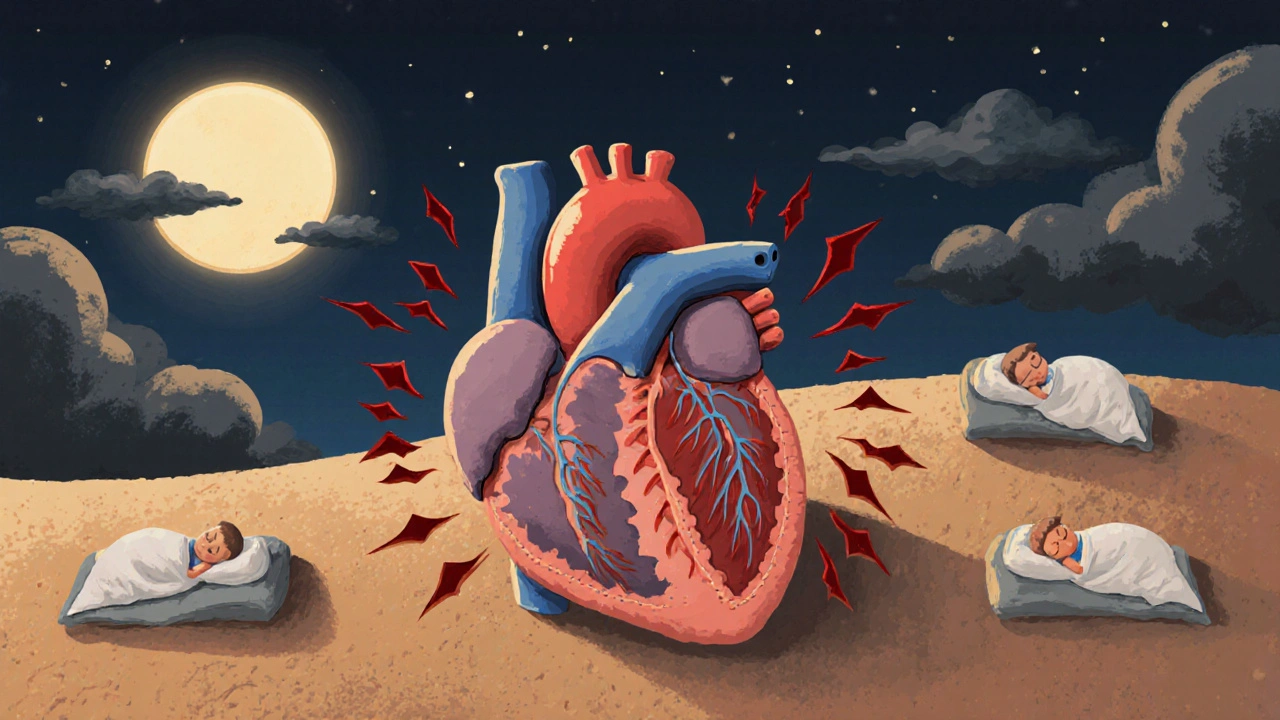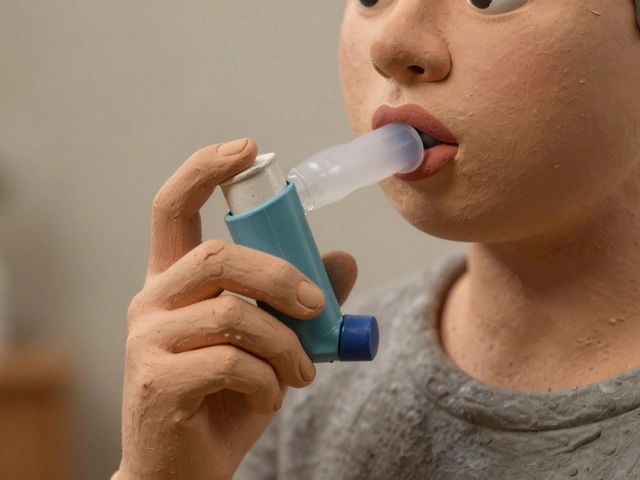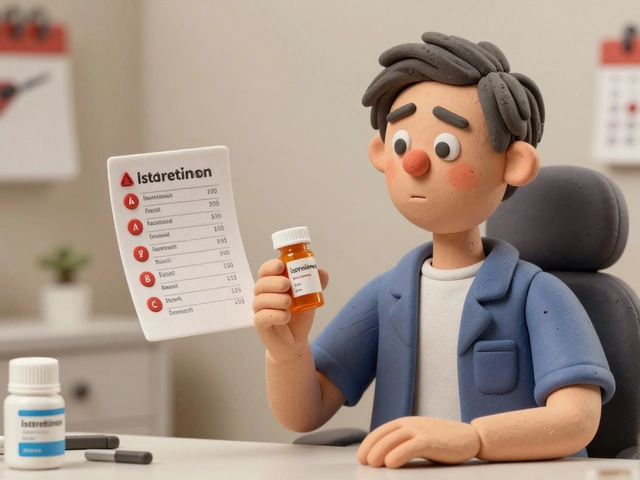When you stop breathing for 10, 20, even 40 seconds while asleep-repeatedly, night after night-your heart doesn’t just rest. It’s under siege. Obstructive sleep apnea (OSA) isn’t just loud snoring or daytime tiredness. It’s a silent cardiovascular threat that spikes blood pressure, scrambles heart rhythms, and significantly raises your risk of stroke, heart attack, and heart failure. And if you have high blood pressure or an irregular heartbeat, you might already have it-without knowing.
How Sleep Apnea Strains Your Heart
Every time your airway collapses during sleep, oxygen levels drop. Your body reacts like it’s drowning. The brain sends emergency signals to wake you up just enough to breathe again. These mini-awakenings happen dozens of times an hour, often without you remembering. But your heart? It never gets a break.
During each apnea episode, your body releases stress hormones. Sympathetic nervous system activity surges by 200-300%. Blood pressure spikes 20-40 mmHg in seconds. Then, when you breathe again, pressure crashes-only to spike again moments later. This rollercoaster doesn’t stop at dawn. Many people with untreated sleep apnea wake up with high blood pressure that lingers all day.
It’s not just pressure. The repeated oxygen drops cause inflammation, damage blood vessel linings, and make platelets stickier. Over time, this wears down your heart’s ability to relax and fill properly. About 40% of people with OSA show signs of left ventricular diastolic dysfunction-meaning their heart muscle stiffens and can’t pump blood efficiently. That’s the early warning sign of heart failure.
Arrhythmias: When Your Heart Goes Off-Beat
One of the most dangerous links between sleep apnea and heart disease is arrhythmia-especially atrial fibrillation (AFib). In AFib, the upper chambers of the heart flutter chaotically instead of beating normally. This raises stroke risk fivefold.
People with severe OSA (30+ breathing pauses per hour) are 3 to 5 times more likely to develop AFib than those without sleep apnea. Why? The constant tug-of-war between the nervous system’s fight-or-flight response and its rest-and-digest mode creates electrical chaos in the heart. Vagal withdrawal followed by sudden sympathetic surges triggers abnormal heart rhythms. A 2024 study from UT Southwestern found that OSA patients had more frequent and longer-lasting AFib episodes than those with only traditional risk factors like obesity or age.
Even more alarming: OSA increases AFib risk by 140%, while hypertension alone increases it by about 50%. That means untreated sleep apnea can be a bigger driver of irregular heartbeats than high blood pressure itself. And here’s the catch-many people with AFib are never screened for sleep apnea, even though 45-60% of them have it.
Why OSA Is Different From Other Risk Factors
Obesity, smoking, diabetes-these are all known to harm the heart. But OSA is different. It doesn’t just add to the risk. It actively triggers damage every night through mechanical stress and oxygen starvation. Even if you’re not overweight, you can still have OSA. Thin people with narrow airways, large tongues, or a recessed jaw are just as vulnerable.
Studies that control for age, weight, and other conditions still show OSA independently increases stroke risk by 60%, coronary artery disease risk by 30%, and heart failure risk by 140%. The American Heart Association now classifies OSA as a “Class I” risk factor for atrial fibrillation-meaning the evidence is strong enough to treat it like hypertension or obesity.
Central sleep apnea, caused by the brain failing to signal breathing, doesn’t carry the same level of risk. The danger lies in obstructive sleep apnea-the physical blockage of the airway. That’s why snoring, gasping, or choking during sleep are red flags, even if you feel fine during the day.

How Treatment Lowers Heart Risk-Fast
The good news? Treating OSA doesn’t just improve sleep. It directly protects your heart.
Continuous Positive Airway Pressure (CPAP) therapy is the gold standard. It uses gentle air pressure through a mask to keep your airway open. After just 3 months of consistent use (4+ hours per night), patients see an average drop of 5-10 mmHg in systolic blood pressure. That’s the same effect as adding a second blood pressure pill.
For AFib, the results are even more striking. One study showed a 42% reduction in AFib recurrence after 12 months of CPAP use. Patients who stick with it report fewer palpitations, less fatigue, and often need fewer heart medications. One Reddit user, diagnosed with severe OSA (AHI of 42), saw his blood pressure drop from 160/95 to 128/82 in three months after starting CPAP. Another, who had weekly AFib episodes, cut them to once every two months.
It’s not magic. It’s physics. By preventing oxygen drops and pressure swings, CPAP removes the repeated cardiac trauma that’s been happening every night. The heart gets a chance to heal.
Who Should Get Tested-and How
If you have any of these, you should be screened for OSA:
- High blood pressure, especially if it’s hard to control with medication
- Atrial fibrillation or other arrhythmias
- History of stroke or heart failure
- Loud snoring, gasping during sleep, or daytime exhaustion
- Being told you stop breathing while asleep
Testing is simple. Most people start with a home sleep test-a small device you wear overnight that tracks breathing, oxygen levels, and heart rate. It’s less expensive and just as accurate as an in-lab study for straightforward cases. If you have other heart conditions, your doctor might recommend a full polysomnography in a sleep lab.
Diagnosis isn’t about how loud you snore. It’s about the apnea-hypopnea index (AHI)-the number of breathing disruptions per hour. An AHI of 5 or higher means you have sleep apnea. Mild: 5-14. Moderate: 15-29. Severe: 30 or more. Many people with AHI above 20 don’t even realize they have a problem.

Why People Quit Treatment-and How to Stick With It
Here’s the hard truth: 25-30% of people stop using CPAP within the first year. Common reasons? Mask discomfort, dry mouth, feeling claustrophobic, or just forgetting to wear it.
But most of these issues are fixable. Try different mask types-nasal pillows, full face, or hybrid designs. Use a humidifier attachment. Start with a “ramp” setting that slowly increases pressure as you fall asleep. Replace mask cushions every 3 months-they wear out and leak.
Consistency matters. People who use CPAP 4+ hours a night, 5+ nights a week, see the biggest heart benefits. One 2024 survey of over 5,000 CPAP users found 78% had more energy, and 65% needed fewer blood pressure meds. The improvement isn’t slow-it often shows up within weeks.
What’s Next for OSA and Heart Health
Research is moving fast. A 2024 study in Circulation found that people with OSA have 2.3 times more scar tissue (fibrosis) in their atria than those without it. That fibrosis is what makes AFib harder to treat and more likely to return.
New treatments are emerging. Inspire Therapy, a small implant that stimulates the nerve controlling the tongue, keeps the airway open without a mask. It’s approved for patients who can’t tolerate CPAP and has shown a 79% drop in breathing events.
By 2025, major heart organizations are expected to formally classify OSA as a “major risk factor”-on par with smoking and cholesterol. That means doctors will be required to screen for it during routine heart checkups.
And here’s the most urgent takeaway: You don’t have to be old or obese to be at risk. A 2024 study from UT Southwestern showed OSA increases heart damage even in adults under 40. If you’re tired, snore, or have high blood pressure-you owe it to your heart to get tested.
Frequently Asked Questions
Can sleep apnea cause high blood pressure even if I’m not overweight?
Yes. While obesity is a common risk factor, sleep apnea can occur in thin people due to anatomy-like a narrow airway, large tongue, or recessed jaw. The repeated oxygen drops and pressure swings from breathing pauses directly trigger hormonal stress responses that raise blood pressure, regardless of body weight. Studies show up to 40% of people with resistant hypertension have undiagnosed OSA, even if they’re at a normal weight.
Does treating sleep apnea reduce the need for heart medications?
Many people find they do. After 3-6 months of consistent CPAP use, blood pressure often drops enough that doctors can reduce or eliminate one blood pressure medication. For those with atrial fibrillation, CPAP can reduce the frequency of episodes, lowering the need for rhythm-control drugs. A 2024 survey of 5,200 CPAP users found 65% reported needing fewer heart medications after starting treatment. This isn’t a replacement for medication, but it can significantly reduce reliance on it.
Is CPAP the only treatment for sleep apnea?
No, but it’s the most effective for most people. Other options include oral appliances (custom mouthpieces that reposition the jaw), weight loss, positional therapy (sleeping on your side), and surgery to remove excess tissue. For those who can’t tolerate CPAP, Inspire Therapy-an implant that stimulates the tongue nerve-is FDA-approved and effective for moderate to severe OSA. The best choice depends on your anatomy, severity, and lifestyle.
How long does it take to see heart benefits from CPAP?
Some improvements happen quickly. Blood pressure can drop within 2-4 weeks of consistent use. Daytime energy and sleep quality often improve in the first month. For heart rhythm benefits, like fewer AFib episodes, it typically takes 3-6 months. The key is consistency-using CPAP at least 4 hours a night, 5 nights a week. The longer you use it, the more your heart heals.
Can sleep apnea cause sudden cardiac death?
Yes. The combination of oxygen deprivation, blood pressure spikes, and heart rhythm disturbances creates a perfect storm for sudden cardiac events, especially during the night. People with severe OSA have a 2-3 times higher risk of sudden cardiac death compared to those without it. The highest risk occurs between midnight and 6 a.m.-when apnea episodes are most frequent and the heart is most vulnerable. Treating OSA significantly reduces this risk.







Esperanza Decor
My dad had untreated sleep apnea for years and never knew it. He was always tired, but we thought it was just aging. Then he had a mini-stroke at 62. The sleep study changed everything. CPAP didn’t just help his breathing-it dropped his BP from 165/98 to 122/78 in 8 weeks. He says he feels like he’s 10 years younger. If you’re tired all the time and have high BP, get tested. It’s not laziness. It’s your heart screaming for help.
And no, you don’t have to be overweight. My dad was 5’10” and 158 lbs. He just had a small jaw. Anatomy matters more than weight.
Stop ignoring snoring. It’s not cute. It’s a warning light.
Deepa Lakshminarasimhan
They say CPAP saves lives but who’s really behind this? Big Pharma pushes masks so they can sell more meds. You think they want you cured? Nah. They want you dependent. The real fix is sleeping on your side and avoiding dairy. That’s what my cousin did after his ‘sleep study’-and he stopped snoring in two weeks. No machine. No cost. Just lifestyle. They don’t tell you that because it doesn’t make money.
Also, why do all these studies come from the US? What about other countries? Maybe we’re being manipulated into buying devices we don’t need.
Erica Cruz
Let’s be real-this post reads like a CPAP ad written by a pharma rep with a thesaurus. ‘Silent cardiovascular threat’? ‘Heart under siege’? Dramatic language to sell a $1,000 machine. Yes, OSA has risks-but so does everything. You’re telling me every snorer is one breath away from a heart attack? That’s fearmongering.
And don’t get me started on the ‘42% reduction in AFib recurrence’ claim. That’s from a 2019 study with 120 patients. Hardly a population-level truth. Meanwhile, 30% of people quit CPAP because it’s uncomfortable and ineffective for half of them. The data is messy. Stop treating this like gospel.
Also, ‘central sleep apnea is safer’? That’s not even accurate. Central apnea is more dangerous in heart failure patients. You’re cherry-picking data to fit a narrative.
Johnson Abraham
cpap is a joke. i tried it. felt like i was suffocating. my wife says i snore like a chainsaw but i dont feel tired. i sleep fine. they just wanna sell you stuff. also why do all these studies say ‘4 hours a night’? what if i sleep 6 but only use the mask 2? am i still screwed?
also i heard the machine makes your face sag. is that real? or just internet lore?
ps. my cousin got a mouth guard from walmart and it worked. why pay 1k for a mask?
Shante Ajadeen
Thank you for writing this. I’ve been waiting for someone to lay it out like this. My mom was diagnosed last year after her cardiologist asked if she snored. She thought it was normal. She’s 68, thin, and never thought she had a problem. Now she’s on CPAP and her energy is back. She’s even gardening again.
It’s not about being ‘lazy’ or ‘overweight.’ It’s about your body being starved for oxygen every night. That’s not normal. That’s damage.
If you’re reading this and you’re tired, or have high BP, or wake up gasping-don’t wait. Get tested. It’s not scary. It’s simple. And it might save your heart.
dace yates
Interesting that they mention UT Southwestern’s 2024 study but don’t cite the DOI. Also, the 140% increase in AFib risk from OSA-is that adjusted for BMI? Age? I’ve seen conflicting numbers. Can someone link the actual paper? I want to check the methodology.
Danae Miley
Correction: The American Heart Association classifies OSA as a Class IIa risk factor for AFib, not Class I. Class I is reserved for conditions like hypertension and diabetes where intervention is proven to reduce mortality. OSA is ‘reasonable to treat’-not ‘mandatory.’ This post is misleading. Also, CPAP doesn’t ‘heal’ the heart-it reduces acute stress. Fibrosis from years of untreated apnea doesn’t reverse. Don’t oversell it.
Charles Lewis
It’s important to recognize that obstructive sleep apnea is not merely a sleep disorder-it is a systemic condition with profound implications for cardiovascular physiology. The intermittent hypoxia and intrathoracic pressure swings induce neurohormonal activation, endothelial dysfunction, oxidative stress, and sympathetic overdrive-all of which are established pathways in the development of hypertension, arrhythmias, and structural cardiac remodeling.
While CPAP remains the gold standard, its efficacy is contingent upon adherence, which is influenced by psychosocial factors including patient education, mask comfort, and clinician follow-up. The 78% energy improvement rate cited in the 2024 survey aligns with longitudinal data from the Sleep Heart Health Study, which demonstrated significant improvements in daytime alertness and quality of life metrics after 12 months of consistent use.
Furthermore, emerging therapies like hypoglossal nerve stimulation (e.g., Inspire) represent a paradigm shift for patients intolerant to positive airway pressure. These devices address the anatomical root of obstruction without the psychological burden of mask use. However, they require careful patient selection based on upper airway anatomy, BMI, and comorbidities.
What is often underemphasized is the role of primary care physicians in screening. The American College of Cardiology now recommends routine screening for OSA in patients with resistant hypertension, atrial fibrillation, or unexplained heart failure-regardless of BMI. This represents a critical evolution in preventive cardiology.
Finally, while lifestyle modifications such as weight loss, positional therapy, and alcohol reduction can be beneficial, they are insufficient as standalone interventions for moderate to severe OSA. The evidence is unequivocal: untreated OSA carries independent cardiovascular risk. The question is not whether to treat-it’s how to optimize treatment for the individual.